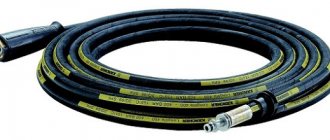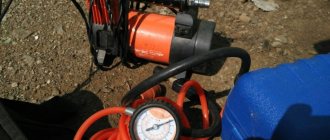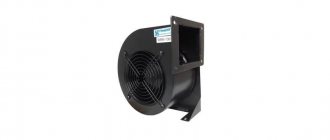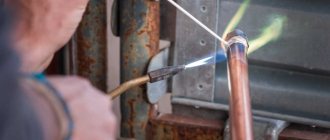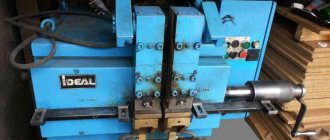The façade is what we first pay attention to when approaching any building, be it a residential building or an administrative complex. The various stains that have formed on the surface of the walls of a once beautiful building, but lacking proper maintenance, will immediately catch your eye. And if the house is one of these unkempt buildings, then you should be prepared for the fact that the first impression of it, and of the owner as a good owner, will be spoiled. This is especially true if the house is being prepared for sale. But cleaning the facade will help correct the situation. Now this is a popular service provided by various companies, but the procedure can be carried out independently. If you know how.
Facade cleaning
Cleaning building facades from contamination
Why is this necessary?
Any building, and especially a residential building, must have a neat (albeit not perfect) appearance in order to impress the visitor. But despite all the careful treatment of the facade, over the time that has passed since the construction of the building, the walls become dirty and lose their attractiveness. This is especially noticeable in buildings located within the city limits, along highways, near industrial enterprises.
Facade washing
Natural factors also have an impact on the facade - snow, rain, heat. Even the wind, which sometimes carries soot from nearby garages that are heated by stoves, can do bad things. The ash particles brought by it will easily settle on the surface of a plastered, concrete or brick wall. Even plant pollen during the flowering period can settle on the surface of the facade, ruining its appearance.
Facade before and after cleaning
Attention! Emissions from some enterprises that enter the atmosphere then, mixed with precipitation, turn into such an explosive mixture that they can completely destroy the exterior of the building. That is why cleaning of facades should be regular, and it is recommended to carry it out at least once a year.
Washing the facade of a multi-storey building
Facade washing is equally necessary for administrative, residential and even industrial buildings. Especially in the modern world, when more attention is paid to the wrapper than to the internal contents.
Washing the brick facade
Often, due to its unattractive appearance, the owner cannot sell for years even a house that is excellent inside and of good quality, and the first impression of the company will always be based on the appearance of the building where it is located. Also, the facade must be cleaned before you begin to restore or refinish it. And if this procedure is not necessary to cover the walls with siding, then you still need to wash the walls before painting or applying a fresh layer of plaster.
Cleaning a brick wall from paint and varnish with sandblasting
On a note! It is believed that it is possible to paint the facade without preliminary cleaning. But in this case, the paint will not adhere well to the walls, and over time it will quickly fall behind, not lasting the required period. And all the work will have to be done again. Thus, cleaning the facade also saves money that could be spent on premature repairs and reconstruction work.
Facade cleaning services are not cheap, and this is justified when you need to wash a high-rise building. But it’s much cheaper to tidy up a one- and even two-story private house yourself, saving a lot of money.
The services of specialists are not cheap, so it is advisable to clean a private house yourself
Types of pollution
There are quite a lot of substances and causes of contamination of the facade of any building. Often the choice of product used to clean the walls will depend on what they were stained with. After all, it’s enough to wash off some things with warm water, but some things won’t really wash off even when using aggressive chemicals.
Example of pollution
In general, all types of pollutants can be divided into organic and mineral. This separation depends on the origin of the pollutants. For example, mineral stains include traces of rust, cement stains, efflorescence, while organic stains include mold, moss, traces of insects or bird droppings, and grease stains. Many of the pollutants can cause irreparable damage to the façade covering.
Efflorescence on a brick wall
Table. The main sources and causes of façade pollution.
| Source or reason | Description |
| Exhaust gases from vehicles | Along with industrial emissions and dust, they are very unpleasant and dangerous pollutants for human health. They settle on the walls of the facade, accumulating a lot of harmful substances, which in high concentrations can cause the development of various diseases. These consequences of the “benefits of civilization” are removed from the walls very capriciously. |
| Emissions from enterprises, including boiler houses and thermal power plants | A very corrosive type of pollutant that looks like a thick layer of black dust on the wall. It is poorly washed, but at the same time it forms again on the walls quite quickly, since it is unlikely that the boiler room that produces heat will close due to residents’ dissatisfaction with dirty walls. The same can be said about other industrial enterprises. In fact, emissions from factories should not reach the residential sector and literally poison people's lives. But during the Soviet era, construction was in full swing and not all enterprises were built in accordance with the wind rose. That’s why such “mistakes” took place. |
| Pollen and dust | Despite their lightness, they are very corrosive types of facade contaminants. The smallest particles of dust or plant pollen settle on the surface of the façade covering and hide in the pores of the masonry, from where they are very reluctant to be washed away. The facade painted with glossy paint is least susceptible to this type of pollutant. Dust and pollen have another negative impact on the façade. The fact is that when they get into the pores, they clog the surface of the stone from which the house is made and do not allow it to “breathe”. Water that gets inside the stone cannot evaporate, and in winter it begins to expand when it freezes, gradually destroying the masonry. |
| Insects | Cobwebs, traces of bugs crashing into the wall and other “residues of vital activity” of insects can also, over time, make the facade look terrible. By the way, if the cobwebs are washed off with plain water, then traces of dead insects will be much more difficult to wash off. Especially if they have had time to dry properly. |
| Precipitation | Often, due to rain and snow, various chemical processes can occur on the walls of houses, up to the dissolution of some substances and the formation of new compounds. And there is no guarantee that the new substances will have exactly the same color as the facade of the house. In addition, excessive humidity promotes the development of various organic pollutants - mold, moss, and so on. |
| Graffiti | Whatever one may say, no one is protected from the negative human factor. It just won’t work out like that – the paint won’t wash off with ordinary water. Here you will have to use either chemicals or serious mechanical force. In some cases, the facade will be irreparably damaged. |
| Efflorescence | These are substances that, when dissolved by water or other liquids, are released directly from the building material. The resulting brine solution appears on the wall and dries out. Efflorescence appears as whitish spots on a concrete or brick surface. Most often they occur on brickwork. In addition to their unpresentable appearance, they have a very negative impact on the material from which the building is constructed. These traces cannot be removed with water. |
| Mold | Often occurs in damp regions between masonry joints. Favorite habitat is sandstone. To put the appearance of the facade in order, you will have to remove all traces of mold. |
| Soot formed during a fire | Unfortunately, no one is immune from such a disaster as a fire. It will take a very long time to restore the house, and it will not be cheap. And even if you no longer want to live in it, you will have to spend a lot of effort to sell it. Including cleaning the facade from soot. This type of stain cannot be washed off with plain water, which means you will have to spend money on special devices or certain chemicals. |
Cleaning brickwork from efflorescence
Hydrophobization of facades
Hydrophobization of facades includes a set of measures that ensure reliable protection of building materials from moisture. The need for this process is due to the porous structure of brick, concrete, foam block, gas block, and wood. Any material used in the construction of walls and ceilings has its own service life. Hydrophobization allows you to significantly extend it, improving characteristics such as strength and moisture resistance.
Equipment for thermal abrasive surface treatment
Thermal abrasive cleaning is an analogue of abrasive blasting. The main difference between these methods is the temperature and gas flow rate. This technology involves exposing the surface to be cleaned to a high-temperature supersonic jet carrying particles of abrasive material.
The gas jet is formed by the combustion products of kerosene or diesel fuel burned in compressed air in the combustion chamber of the burner. The burner ensures the introduction of abrasive particles into the gas flow and is equipped with an accelerating channel that allows them to be given the maximum possible speed. The characteristic values of the velocity and temperature of the gas phase of the flow in the outlet section of the accelerating channel are 1,250 m/s and 1,400 K, respectively. In this case, the speed of abrasive particles is 100-300 m/s, depending on their fraction and chemical nature. The speed of particles is 2.5-3.5 times higher than with traditional jet-abrasive processing, and the energy of impact with the surface is 6-10 times. The high kinetic energy of abrasive particles determines the unique efficiency of thermal abrasive cleaning technology. The diagram of the thermal abrasive installation is shown in Fig. 5.
The technology makes it possible to clean metal surfaces from all types of dirt and deposits, such as:
- metallurgical scale;
- corrosion products;
- paint, galvanic and gas-thermal coatings;
- limestone and other deposits.
The quality of the cleaned surface corresponds to grade Sa 3.
With the thermal abrasive cleaning method, degreasing, dust removal and activation of the surface are simultaneously ensured, which eliminates the need for any additional operations before applying coatings of any type. The required surface roughness is set, which is determined mainly by the type and dispersion of the abrasive and is in the range of values Rz20 - Rz80. After cleaning using thermal abrasive technology, the surface becomes uniformly rough, degreased, heated to a temperature of 50-60 ° C and chemically active. Such parameters ensure high adhesion of applied protective coatings.
Due to the high productivity of the process, the exposure time of the surface in a high-temperature flow is insignificant and overheating of the surface layer of the metal does not occur. The use of thermal abrasive technology is especially effective when cleaning large steel structures, such as ship hulls.
Rice. 5 Scheme of thermal abrasive installation
This cleaning method is characterized by high productivity and processing quality.
The thermal jet unit ensures cleaning from corrosion products with the highest possible quality and productivity of at least 0.33 m²/min, which, taking into account the preparatory and final time, allows you to process at least 100 m² per work shift (7 hours). The use of thermal abrasive technology is especially effective where the traditional method of jet-abrasive processing is ineffective - when cleaning multi-layer paint and varnish coatings, including epoxy, oil and bitumen contaminants, hardened and unhardened petroleum products, metallized and polymer coatings, etc. Practice has proven the high efficiency of the thermal abrasive method when production and repair of bridges, pipelines, oil storage facilities, ships, industrial equipment, building metal structures. It is also possible to clean structures and structures made of concrete, natural stone and brick from various types of contaminants, including biological ones (mold, fungi).
Thermal abrasive equipment is distinguished by its versatility, ease of operation and mobility. These advantages allow you to perform work both in factory and field conditions or conditions poorly suited for mechanization, far from sources of power supply and communications.
To operate a thermal jet installation, a source of compressed air is required that provides a working pressure of 0.7-1.2 MPa with a productivity of 4.5-7.0 norms. m³/min. The power of the jet is regulated by the fuel tap on the burner, so when cleaning a complex surface, the worker can open the fuel tap slightly and the fuel consumption will increase. On average, fuel consumption is 9 l/h.
The consumption of abrasive material when using river sand is approximately 380-400 kg/h, cup slag - 2 times more. But the abrasive properties of cuproslag are much higher than those of sand, its density is also 2 times greater, so the productivity and quality of work when using cuproslag is much higher.
The precautions are the same as for traditional abrasive blasting - protection of respiratory organs, hearing, vision, skin, fencing of the work area, etc.
Operators do not require special skills to carry out cleaning work using thermal jetting equipment.
Thermoabrasive installation TAU-100/TAU-200
The TAU-100/TAU-200 installation (Fig. 6, 7) is intended for the following work:
- high-quality cleaning of metal and non-metallic surfaces from various types of contaminants and corrosion: rust, scale, paint coatings, bitumen, resins, sealants, rubber, etc.;
- preparing surfaces of structures before applying protective coatings;
- treating the surface of old concrete to connect it with new concrete, removing areas of “sick” concrete before restoration operations;
- performing work outdoors.
To ensure the operation of the installation you need:
- compressed air. Its source can be an industrial air main or a mobile compressor, providing a pressure of 0.6 MPa and an air flow of 300 m³/h (5.0 m³/min; 5,000 l/min);
- combustion product, which uses kerosene or diesel fuel;
- abrasive material - dry sifted river sand, shot, corundum, etc.
Rice.
6 Thermal abrasive installation TAU-200 Technical characteristics of the thermal abrasive installation, consumption rates of working components and performance data are presented below:
| Technical characteristics of the thermal abrasive installation TAU-100/TAU-200 | |
| Abrasive tank capacity, l | 100 (200) |
| Fuel tank capacity | l 25 |
| Weight, kg | 146 (161) |
| Operating air pressure, MPa | 0,5-0,7 |
| Maximum length of rubber hoses, m | 20 |
| Abrasive fraction, mm | Up to 1.2 |
| Cooling of the burner working body | Air |
| Ignition | Electrical |
| Kerosene (diesel fuel) consumption, l/h | 9 |
| Compressed air consumption, m3/h | 300 |
| Abrasive consumption (river sand), kg/h | 280 |
| Productivity when cleaning a flat metal surface from rust or a single-layer coating, m2/h, not less | 45 |
| Productivity when cleaning a flat concrete surface, m2/h, not less | 50 |
| Cleaning quality according to ISO 8501-1; 1988/SS05 5900 | Sa 3-Sa 2.5 |
| Roughness of the processed surface | Rz30-Rz60 |
| Noise level, dB | 110 |
Complete set of TAU installation:
- abrasive cylinder with a volume of 100 or 200 l - 1 pc.;
- fuel cylinder with a volume of 25 l - 1 pc.;
- rubber hose for air with a diameter of 20 mm, a length of 20 m;
- rubber sleeve for fuel with a diameter of 6 mm, a length of 20 m;
- rubber sleeve for abrasive with a diameter of 20 mm, length 20 m;
- gas-dynamic jet accelerator - 1 pc.;
- moisture-oil separator - 1 pc.;
- device for electric start - 1 set;
- quickly wearing parts - 1 set;
- manual.
Advantages of the thermal abrasive method of cleaning surfaces compared to the traditional sandblasting method:
- cleaning performance is 2-3 times higher;
- cleaning quality up to Sa 3;
- the ability to clean “thick-layer” dirt and coatings;
- during cleaning, the surface is heated, degreased and activated, which eliminates the degreasing operation before applying the coating;
- the required uniform surface roughness is ensured;
- abrasive consumption is reduced by 3-4 times;
- Prevents oil and moisture from coming into contact with the treated surface when using compressed air.
Disadvantages of using thermal cleaning:
- the impossibility of cleaning products made of thin sheet metal (1-2 mm), products made of sheet aluminum and others, since a powerful gaseous jet provokes internal stress (hardening) in the metal, which leads to deformation;
- cannot be used when cleaning containers for storing petroleum products if they have not been treated with steam, there is a possibility of ignition of the vapors;
- in the abrasive material supply tank it is necessary to create a pressure exceeding the pressure of the working fluid in the combustion chamber of the burner;
- the burner nozzle is subjected to thermal erosion by abrasive particles, which reduces the service life of the nozzle;
- due to the long residence time of abrasive particles in the combustion chamber and in the subcritical part of the burner nozzle, they may be heated to the temperature of transition to an amorphous state;
- at relatively high consumption of abrasive particles, due to the removal of heat from gaseous combustion products, the temperature of the gas phase decreases, which negatively affects the efficiency of the burner;
- impossibility of use in flammable areas;
- presence of significant noise;
- Constant monitoring of fuel lines and connectors, otherwise there may be a leak that will lead to a fire.
Rice.
7 Jet burner nozzle of a thermal abrasive installation Considering the complex of listed reasons, the method of thermal abrasive cleaning has recently been used less and less.
Facade cleaners
In order to most effectively clean walls from dirt, it is not enough to use water alone (unless under high pressure). It is also necessary to use various chemicals, an overview of which is presented in the table.
Table. Facade cleaning products.
| Name | Description |
| Facade cleaner No. 2 HimBox | It copes well with soot, dust, dirt deposited on concrete, brick, stone facades, as well as on plastic, plastered, painted walls. To remove minor contaminants, a concentration of 25% is sufficient. Can be used for machine cleaning of facades. |
| Drug Dali | Copes well with stains on concrete, foam blocks, bricks, and tiles. Ideal against limescale, carbonate pollution, cement deposits. It has a moderate effect on the facade, does not destroy it, but removes dirt well. The drug is acid-based and cannot be mixed with other acidic compounds. |
| Facade cleaner No. 5 HimBox | A solution that works almost the same as cleaner No. 2, but is more aggressive and chemically active. For light stains, a concentration of 5% is sufficient. |
| Himitek Anti-vandal Graffiti | As you might guess, this tool is one of the best in the fight against graffiti on walls. The base is water, so the drug is not dangerous for plastic, brick, or wild stone. |
| Himitek Polycor Gel | One of the best means for combating traces of rust, efflorescence, and oils. The base is acidic. |
| Anti-Fungus and Anti-Mold | Preparations used to clean walls from colonies of microorganisms, fungi, and mold. Foams well and is effective. |
Price for façade cleaning products
Facade cleaning products
The choice of cleaning agent should be made depending on how resistant the facade finishing material is to acids.
- Sensitive to acid - travertine, marble, limestone, dolomite, cement-based artificial stone. Alkaline or neutral mixtures are used to clean them.
- Acid-resistant - slate, granite, brick, ceramics, clinker. They can be treated with slightly acidic agents.
- Only neutral agents are used for plaster; slightly alkaline agents can only be used for decorative plaster.
Cleaning a brick wall from efflorescence
On a note! Requirements for nature and environmental protection are becoming more stringent every year, and therefore the use of aggressive chemicals for cleaning facades is undesirable. This also applies to architectural monuments, to which chemistry can cause irreparable harm. That is why it is important to be very careful when choosing a cleaning product, or even abandon its use altogether.
Advantages and disadvantages
The hydrojet method of surface preparation using water supplied at different pressures and at different speeds has the following advantages:
- the operation can be performed on materials of different origins;
- there is no thermal effect;
- explosion and fire safety of work;
- high degree of purification;
- high speed of operation;
- cleaning can be done in hard-to-reach places;
- no gas emission, i.e. the process is environmentally friendly.
In addition, the hydrojet cleaning method can be used using liquids with surfactants, which expands the capabilities of the method.
The method has only two disadvantages. Firstly, it can only be carried out at above-zero temperatures, and secondly, the surfaces after watering with water need to be improved, since this method does not give the required profile and the required degree of cleanliness. Unlike the waterjet method, where a material of a certain hardness is supplied along with the liquid, it is impossible to obtain a clean surface and cut. With its help, you can only get rid of contaminants of various kinds and origins, prepare a metal, plastered surface for the necessary technological operations.
We clean the facade of the house from efflorescence
Let's get acquainted with how the process of cleaning the facade from efflorescence occurs. Note that cleaning the walls should be done at an air temperature of at least +5 degrees, that is, in summer, late spring or early autumn. Otherwise, it will be difficult to choose a cleaning product that does not lose its characteristics when cooled.
Step 1. First of all, all efflorescence and dirt on the facade that can be removed mechanically are cleaned off with a dry brush. The cleaner is then applied to a small area of the façade to test its effectiveness. The cleaner is applied with a brush.
The product is applied to a small area of the facade
Step 2. After 1-3 minutes, the surface is treated with a stiff brush. The result is assessed to determine whether the contaminants have been removed.
Surface treatment with a stiff brush
Evaluation of work results
Step 3. If the cleaner is working, it will clean the entire surface of the facade. After treatment with the drug, the wall must be washed with water under pressure.
After treatment, the wall must be rinsed with water.
Facade washing with water under pressure
Important! Residues of the preparation used for cleaning must be well removed, as they can reduce the effectiveness of the water-repellent impregnation, which will be applied afterwards to protect the facade from external influences.
Step 4. Water-repellent impregnation is applied to the cleaned façade.
Application of hydrophobic impregnation
The material consumption is calculated depending on the contamination of the wall: on average, it is 250-300 ml/m2. If cleaning is carried out with a high-pressure water jet, then to achieve greater effect, use hot water or steam. This will allow you to deal with oil contaminants without the use of chemicals. And it is important to test chemicals or other cleaning methods on the most secluded elements of the facade, so that in case of an error during the selection of the method, flaws in appearance can be easily hidden.
Hydrojet cleaning of metal structures
This method of cleaning surfaces is used in those special cases when standard dry cleaning will be ineffective. It can also be used if the dust component is unacceptable. In such conditions, not only water, but also abrasive is supplied to the surface.
According to their operating principle, there are 2 types of waterjet units:
- injection, where the abrasive, due to vacuum, enters the nozzle;
- pressure ones, where water is supplied to the nozzle, creating a water shell or connection with the air-abrasive mixture.
Water jet cleaning of metal structures is highly effective when working on trusses and other mechanical structures. This is usually how old paint and rust are removed. Injection units are a smart choice that completely eliminates the formation of dust.
The use of hydro-jet cleaning of metal structures is often necessary for oil and gas industry facilities. As a rule, tanks, gas and oil pipelines are cleaned. This method eliminates the occurrence of sparks, meeting fire and explosion safety requirements.



